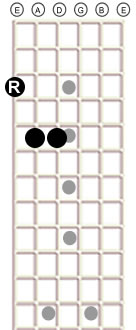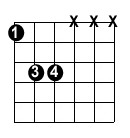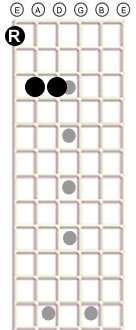Power chords are not really chords. No, really. Hear me out.
Chords are 3 notes or more, whereas power chords only have 2 different notes. A more correct name would be “power intervals” because they only contain two different notes. Usually, power chords are composed of the root, a perfect 5th interval, and the root note doubled at a higher pitch (called an octave). Basically, they are just like playing perfect 5th intervals and doubling up a note or two.
Power chords are easy to play just about anywhere on the neck but lend very little harmonic texture to a song. They do not have a major or minor third interval. A chord needs this interval in order to make it a major or minor chord.
If you’re playing a song with a lot of distortion, strumming a full chord might create too much dissonance. Plus if you have a fast chord change, it’s often easier to use power chords for the really fast part.
No Substitute For Learning The Real Thing
A lot of players get caught in the power chord trap. They learn how to play power chords but fail to learn the real chords. This is a major mistake. Just because you can play a C power chord does not mean you know a C chord. As we said before, they aren’t really chords anyway.
Learning chords is one of the most important things a guitar player can do. It does not matter what style of music you are interested in, you cannot avoid learning your chords! Failing to learn them will mean that you will fail as a guitarist in the long run
Power Chords Move
What I’m about to show you are power chord patterns. These patterns can be moved up and down to create different power chords. The root note determines what power chord it is.
Take a look at this power chord pattern. The note on the low E string is its root note:
Now, by forming this pattern on the 1st fret we are creating an F power chord because the root note is on an F note.
We can play this pattern all the way up the fretboard creating different
power chords.
Here it is with the root note on the 3rd fret. The note on the 3rd fret
of the low E string is a G, so that makes this power chord a G.

Here are some extra PDF files that contain important information. Print them out for offline study!

